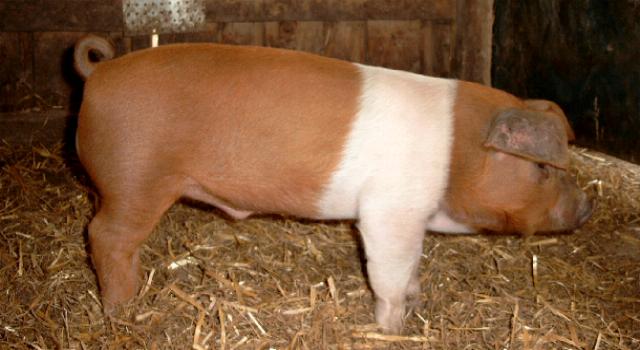Husum Red Pied is a rare domestic pig breed popularly known as the Danish Protest Pig because its whole reason for being was to imitate the Danish country flag at a time when an actual flag could not be raised.
The story of the Danish Protest Pig can be traced back to the mid 19th century when Denmark and Prussia went to war over control of the southern Jutland Peninsula. The two countries couldn’t decide where the border between their lands was, so they eventually went to war. In 1848, Denmark won the war and the claim to the contested land, but only a decade later the Second Schleswig War erupted, and this time Prussia emerged victorious. In the years that followed, Prussian authorities launched a campaign against anything Danish, especially the Danish flag, which didn’t sit too well with farmers in the disputed Jutland territory. So they devised a cunning plan to bypass the ban…

Photo: Axel Krampe/Wikimedia Commons (GFDL License)
Danish farmers living on land now claimed by Prussia were so upset by the rule forbidding them from raising their home country’s flag that they came up with an ingenious pig crossbreeding program to create a new breed that would resemble the Danish flag – a red background covered by a large, white Nordic cross.
No one really knows what breeds were used to create the Danish Protest Pig, but according to Wikipedia, many believe that it is a cross between multiple breeds, most likely Holsteinian and Jutlandian marsh pigs, English Tamworth pig, and red variants of the Angeln Saddleback.
Although created as a form of protest against Prussian rule, the unique breed was formally recognized as a true breed in the 20th century and named Husum Red Pied. The pig is recognized by its red color, broad white vertical belt, and a trace of a white horizontal belt resembling the colors of the Danish flag that inspired it. It grows to a height of about 90 cm and weighs up to 350 kg.
Husum Red Pied pigs corresponding to the original description were last seen in 1984. Specimens bred since are usually missing the white horizontal belt that completes the flag design, but even so, the breed maintains its unique look.
The Danish Protest Pig is currently classified as rare, but the German federal state of Schleswig-Holstein supports preservation of the breed for its cultural value. There are currently between 60 and 140 specimens alive in the world, mainly in German zoos.






